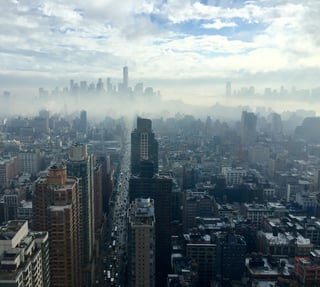 Design software and other technologies used by architectural and engineering firms continue to evolve, becoming more powerful, efficient, specialized and advanced.
Design software and other technologies used by architectural and engineering firms continue to evolve, becoming more powerful, efficient, specialized and advanced.
Moreover, it is those firms willing embrace both existing and emerging technologies, despite what is clearly a large investment, that have the most to gain.
For instance, the current state of A/E firm adoption of Building Information Modeling (BIM) and Virtual Reality (VR) in 2018 and beyond can be gleaned from a recent report released by global computer graphics technology firm Chaos Group. In September 2017, Chaos Group conducted an online survey of architecture and architectural visualization professionals. The questionnaire asked about the types of technology in use at their firms, the challenges of their workplace, and their attitudes and expectations towards the future of the industry.
The survey reached 5,769 respondents from over 70 countries, reflecting the global scale of today’s architecture and architectural visualization practices. Those surveyed included everyone from freelancers and employees at small studios, to multinational firms with thousands of staff.
The objective of the report is to provide a current snapshot of the technology trends in architecture and architectural visualization, and to identify the innovations that are rapidly changing the industry.
Respondents from companies of all sizes confirm the most noticeable change in the last few years is the increased reliance on recently introduced technologies such as BIM and VR. In fact, 70 percent of those surveyed noted that the increased reliance on technology is the number one change in the industry over past three years, almost twice as many as the 36 percent who stated an increased demand for sustainable designs.
While tight deadlines and limited budgets are always top concerns, 43 percent of respondents noted that the increased demand for high-end and photorealistic content is also a major challenge.
Other key findings:
• Fast changing technologies, including the widespread adoption of BIM and VR, are having a profound impact on the industry.
Increased demand for high-end photorealistic visuals and keeping pace with new technologies have become major factors in a competitive industry with tight budgets and quick deadlines. VR introduces a new way to design, collaborate and convey architecture and architectural visualization, bringing with it more opportunity for large architectural firms as well as individual freelancers.
• A majority of architecture and architectural visualization firms will use VR in 2018. Today, virtual reality adds a new dimension to the mainstream 3D tools used in architectural visualization. Because of VR’s unique ability to represent space at human scale, it’s already playing a significant role in architecture, and its usage is expected to increase rapidly in 2018.
Over two-thirds of architecture and architectural visualization professionals plan to use VR in 2018. While 3D tools have been mainstream for architects and visualization artists for some time, the introduction of virtual reality offers new ways for them to experience their designs. More than half of those surveyed have used VR or are currently experimenting with VR on a project. Of those already using virtual reality, 80 percent have used it on multiple projects, suggesting that VR is beginning to play a more significant role in architectural design and visualization workflows.
Large architecture firms have embraced VR at a much higher rate than smaller firms and freelancers. For one, 62 percent of large firms are currently using VR, and more than half of those have already used VR on five or more projects. Meanwhile, 95 percent of the large firms using VR have used it on multiple projects
• Cloud rendering usage expected to triple in 2018. While most architectural visualization rendering is accomplished inhouse, there is growing interest in cloud rendering. Although the current industry standard is to render using an internal render farm, a combined 34 percent of respondents use external render farms and cloud services to complete their projects.
The increased speed of rendering and the ability to do more iterations on a project are the most appealing aspects of rendering on the cloud. Depending on barriers such as cost and ease-of-use, the use of cloud rendering could double mid-year and even triple by the end of 2018. According to the survey, cloud rendering demand could increase significantly in 2018, with the potential for 233 percent growth by mid-year, and up to 367 percent growth by the end of 2018. These numbers could grow even further if any undecided respondents try cloud rendering in 2018.
While the security of cloud computing is often a popular topic, most of those surveyed do not rank it among the major challenges for cloud rendering adoption. Cost is the number one consideration for cloud rendering adoption.
Now it's your turn: What technologies do you beleive are transforming the A/E industry?
We want to hear from you. If you're interested in submitting a guest article to PSMJ's Blog, click here:
In the PSMJ Blog, we have covered technology and the A/E industry from a number of angles. Here is a list of technology-related blog posts:
10 Tips for Effective Project Management with BIM
Where 3D Printing Plays in the A/E/C Arena
3D Printing for A/E/C: How Viable is It?
5 Common Technology Mistakes Made by A/E Firm Leaders



